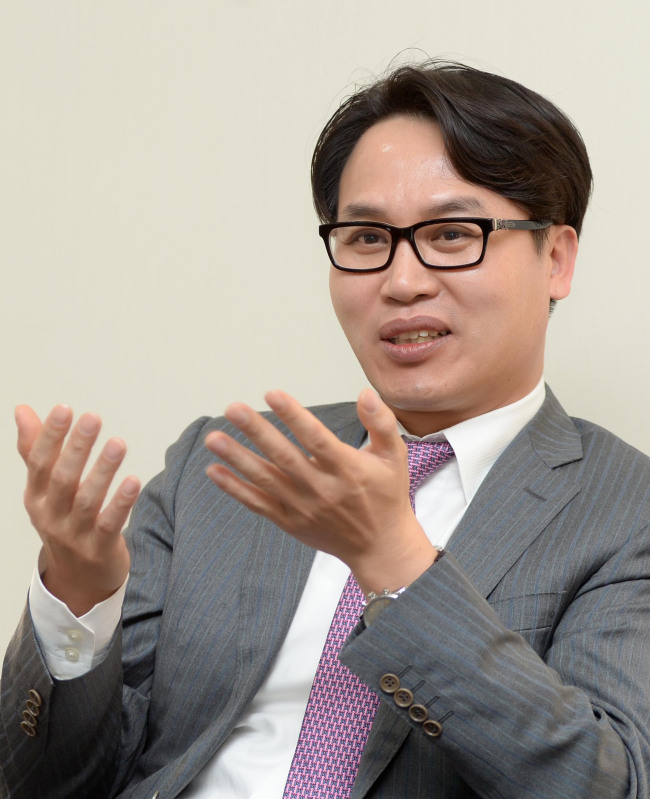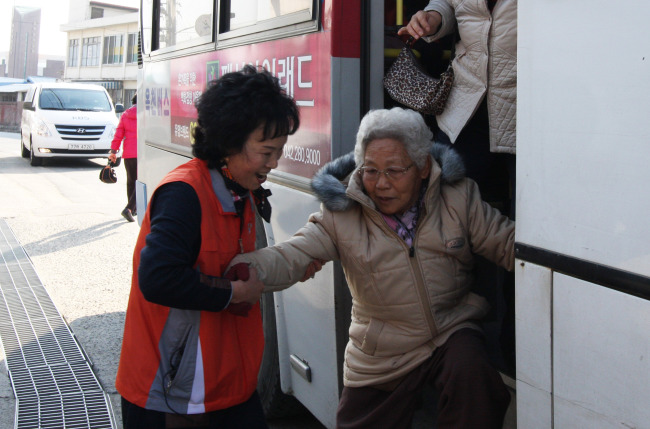Korea needs more narcotics
Medical experts say more Koreans should have access to pain-relieving drugs
By Claire LeePublished : March 26, 2015 - 20:30
In 2010, popular author and TV personality Choi Yoon-hee committed suicide with her husband, after two years of suffering from lupus.
The death of the couple ― her husband was believed to have helped her end her life before killing himself ― left the nation in shock because she was known as the ultimate advocate of a positive frame of mind. In fact, the 63-year-old had often been dubbed the “happiness preacher,” publishing more than 20 books on happiness.
What led her to end her own life, according to the author’s suicide note, was the pain resulting from her health problems. “The pain is just unbearable for me,” she wrote. "My husband couldn't let me die alone."
The death of the couple ― her husband was believed to have helped her end her life before killing himself ― left the nation in shock because she was known as the ultimate advocate of a positive frame of mind. In fact, the 63-year-old had often been dubbed the “happiness preacher,” publishing more than 20 books on happiness.
What led her to end her own life, according to the author’s suicide note, was the pain resulting from her health problems. “The pain is just unbearable for me,” she wrote. "My husband couldn't let me die alone."

Almost 30 percent of Koreans suffer from chronic pain, but most of them don’t have adequate access to pain medication -- as both doctors and patients often fear the adverse effects.
Narcotics (also called opioids), perhaps one of the most feared classes of drugs among Korean patients, are banned in the country unless prescribed for medical purposes. The drug is rarely prescribed to non-cancer patients here.
Local health experts say more Korean patients with chronic pain, such as nerve disorders or postoperative pain, should have access to opioids as they are often the only option left to relieve or manage pain.
According to the World Health Organization, 72 percent of the world’s population lived in countries with no access to opioids as of 2006, and 7 percent in countries with very low consumption. Many countries, including South Korea, fear the potential abuse of the drugs, and often their medical staff are not sufficiently trained in pain management, according to the WHO.
“Because of these barriers, a large majority of the world population must live in pain that is often excruciating,” the organization said in a 2013 report.
Koreans are prescribed less than 47 percent of the opiate consumption level that the WHO considers adequate for chronic pain relief, according to 2010 data. Among some 12,000 Koreans with chronic pain in 2011, 40 percent considered suicide, 60 percent suffered from sleep disorders and 30 percent had problems at work because of pain, according to Yonsei University.

Lee Jong-ho, the area director of international drugmaker Mundipharma’s Korea and Southeast Asia division, said the inadequate use of the drug among Koreans mainly has to do with the attitude of local health professionals. His company specializes in treatments for moderate to severe pain.
“I think a lot of doctors here are extremely hesitant to prescribe opioids as they worry too much about their patients getting addicted to the drug,” he told The Korea Herald.
“But many studies have shown that it’s almost impossible for those with chronic or severe pain to become addicted to narcotics, as long as the drug is used for pain relief. I believe there should be more awareness about pain and medical use of narcotics among Korean doctors.”
Dr. Kim Duk-kyung, a specialist in anesthesia and pain medicine at Sungkyunkwan University, said certain diseases and surgical procedures such as a thoracotomy (chest incision) or mastectomy (breast removal) may cause chronic pain if not treated properly on time with pain relievers.
For example, if a person’s pain is undertreated after a medical operation, the patient is less likely to move around, which increases the risk of developing persistent pain, he said.
Also, several elderly Koreans suffering from herpes zoster, a viral disease that causes blisters and painful skin rashes, experience severe residual nerve pain for years even after the rash heals, Kim noted.
“Some elderly sufferers of herpes zoster actually experience residual pain that is as severe as cancer pain,” Kim said. “They feel pain even when their skin is exposed to wind. If this becomes chronic, the pain can be excruciating and they need strong pain relievers such as opioids.”
Kim stressed that chronic pain patients with no previous drug consumption experience have a low risk of addiction to opioids. However, the doctor suggested patients who take strong pain relievers receive non-pharmacological treatments ― such as physical therapy, psychotherapy and relaxation techniques ― at the same time, to minimize any possibility of drug dependence.
“You are only addicted (to narcotics) if you feel the need for the drug even when you are not feeling any pain,” he explained.
“On the other hand, severe pain can be a serious threat to one’s mental health if left untreated.”
Lee from Mundipharma said the public perception on opioids as well as life-pain balance should change as well.
“Many don’t think it’s weird or ‘unsafe’ for patients with diabetes or high blood pressure to consume the drugs they need every day,” he said.
“We have to start thinking of chronic pain as a chronic disease, rather than a symptom. While many doctors are hesitant to prescribe opioids to those who are in need, many Korean patients, too, are too worried about addiction and choose not to take the medicine even when it’s necessary. They are still not comfortable with the idea of taking a drug that is illegal unless prescribed by a doctor.”
While there is no government data about the impact of chronic pain in Korea, overseas statistics show that the condition can cause enormous economic costs to society, as well as social and psychological maladaptation of the patients.
In the U.S., about 40 million people seek medical help for pain disorders every year, and the total costs of pain treatment exceed $100 billion per year. The country also loses an additional $65 billion annually as sufferers become unable to work because of their health condition.
About 65 percent of patients with chronic pain worldwide report interference with daily activities including sleep, work, sex, exercise and routine self-care.
In order to address the issue, the WHO said in its 2013 report that governments, health organizations and NGOs must collaborate to grant adequate access to opioids for those in need, targeting their efforts at “educational, cultural, health policy and regulatory levels.”
However, Korea’s Health Ministry said the issue is not for the government to tackle. “I’m not sure if this is something the government should be involved in, since it’s really doctors and medical professionals who are in charge (of the use of the drug),” said Lee Go-woon from the ministry’s division of pharmaceutical policies.
By Claire Lee (dyc@heraldcorp.com)


![[AtoZ into Korean mind] Humor in Korea: Navigating the line between what's funny and not](http://res.heraldm.com/phpwas/restmb_idxmake.php?idx=644&simg=/content/image/2024/04/22/20240422050642_0.jpg&u=)

![[Exclusive] Korean military set to ban iPhones over 'security' concerns](http://res.heraldm.com/phpwas/restmb_idxmake.php?idx=644&simg=/content/image/2024/04/23/20240423050599_0.jpg&u=20240423183955)

![[Herald Interview] Why Toss invited hackers to penetrate its system](http://res.heraldm.com/phpwas/restmb_idxmake.php?idx=644&simg=/content/image/2024/04/22/20240422050569_0.jpg&u=20240422150649)
![[Graphic News] 77% of young Koreans still financially dependent](http://res.heraldm.com/phpwas/restmb_idxmake.php?idx=644&simg=/content/image/2024/04/22/20240422050762_0.gif&u=)






![[Exclusive] Korean military to ban iPhones over security issues](http://res.heraldm.com/phpwas/restmb_idxmake.php?idx=652&simg=/content/image/2024/04/23/20240423050599_0.jpg&u=20240423183955)



![[Today’s K-pop] Ateez confirms US tour details](http://res.heraldm.com/phpwas/restmb_idxmake.php?idx=642&simg=/content/image/2024/04/23/20240423050700_0.jpg&u=)